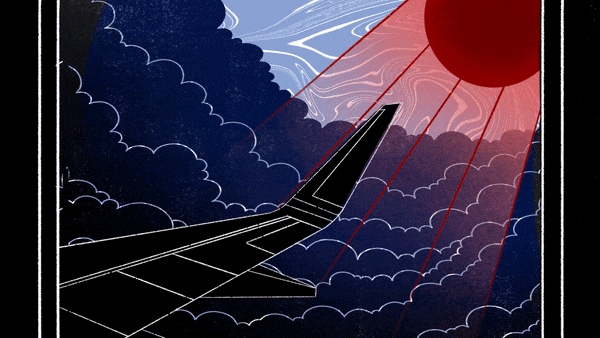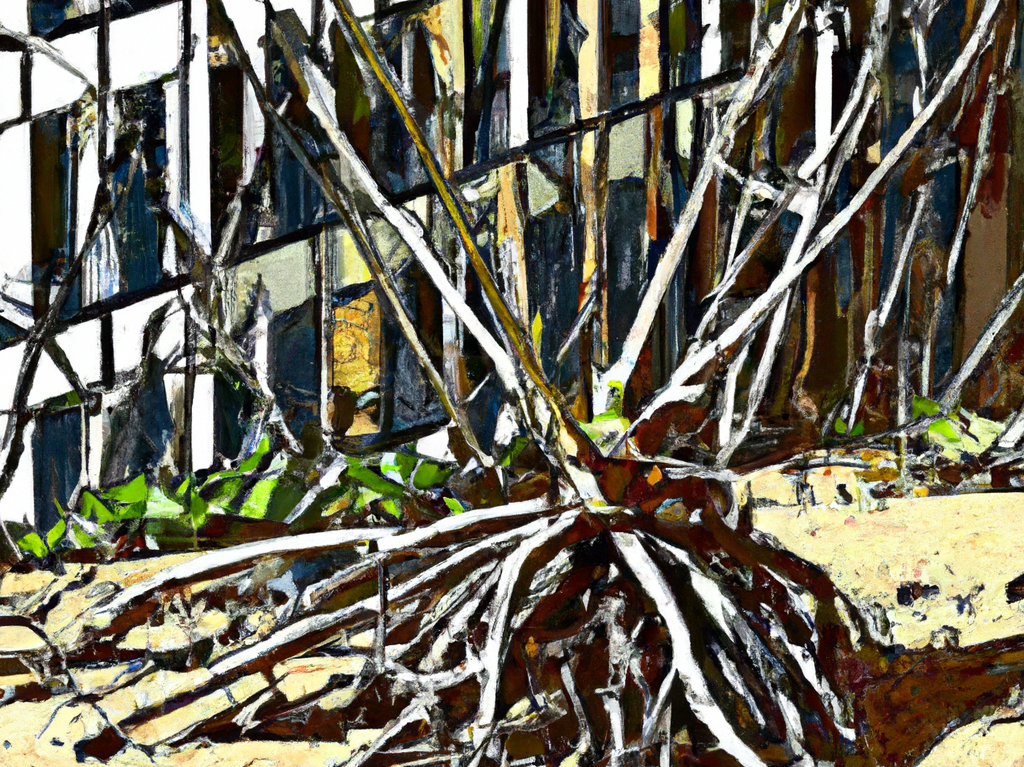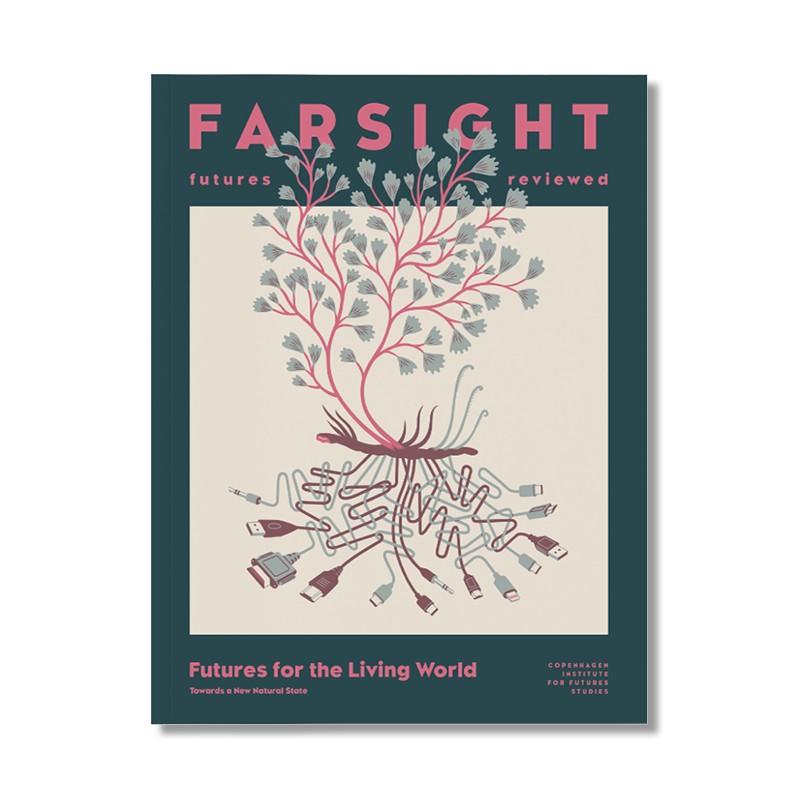
In turn, we use cookies to measure and obtain statistical data about the navigation of the users. You can configure and accept the use of the cookies, and modify your consent options, at any time.
Towards a Rhizomatic Future
Re-organising Knowledge in the 21st Century

In our ongoing quest to systematise our surroundings and make order of the chaos of existence, we often use the natural world as a source of inspiration. Symmetries and Fibonacci sequences found in nature are replicated in our architecture. We adopt the attributes of animals upon innovating new technologies, such as with wings on an aeroplane. We use it for social inspiration, making metaphorical descriptions of people’s temperament based on animals, and often (for better or worse) fall back on what is considered “natural” when evaluating the legitimacy of political ideologies.
This urge partly has its roots in what distinguishes humans from the rest of the living world: our unique ability to manipulate nature to suit our desires. In its simplest form, this is what technology is: the application of basic tools created from nature for an intended purpose. Theorists such as Andy Clark point to this relationship humans have to technology to argue that as a species, we have always been transhumanist, “natural-born cyborgs”. Independent of technology and our use of nature, we would cease being the species we are today.
However, as technology progresses and grows in complexity – increasingly masking its connection to the “natural world” – the rift between nature and humanity expands. This is what has led to a mindset that might be characterised as a “ladder-like” view of nature that has dominated Western philosophy since the ancient Greeks, where humans occupy the throne of existence against the subterrestrial pits of the Earth. In this conception, humans are situated at the top of an imagined hierarchy, towering over lesser beings. Nature is understood by reducing it to its physio-chemical components, rather than as an interconnected and level ecosystem, and the biosphere is something to be conquered rather than the basis for our existence.
The advance of post-industrial society has only served to widen this rift. Surrounded by intricate, immaterial technologies, we are both alienated from the natural world and our technology, all the while often clinging on to a notion of human supremacy that is directly at odds with our growing knowledge of the interconnectedness of the previously separated domains of “nature” and “culture”.
In this abyss of complexity, we require not only a reconceptualisation of how we organise ourselves, but also how we approach the organisation of knowledge itself. One possible answer seems to lie right beneath us: upon digging deeper into the complexity of nature (both figuratively and literally), blueprints can be found for how to best organise ourselves and our thinking for a complex future.
Fascinated by both the world of botany and working to address the question of how to navigate the existential confusion of the 20th century, the French philosopher Giles Deleuze proposed that nature might offer an organisational template for humans in the post-industrial era, offering his concept of the rhizome as an example.
Simply put, a rhizome is a botanical term describing the roots of certain plants. Instead of sprouting in a vertical, tree-like fashion, rhizomes shoot horizontally, seemingly at random, and at times connecting to the roots of other plants through their nodes. Examples of rhizomes are the roots of potatoes and ginger plants. What is important is that rhizomatic structures are neither fixed to a particular space nor grow in a pre-determined way. They are instead defined by nodes (points of attachment), and their subsequent networks, the roots connecting each node to one another, creating a complex and decentralised rhizomatic structure.
Such a structure differs from the ones we typically see in the organisation of individuals and human knowledge. Usually, Deleuze argues, we employ arborescent structures (literally meaning tree-like), where the root of the tree might represent the head of an organisation with each subsequent outgrowing branch representing subdivisions at a lower hierarchical end. The problem with this structure is that it fails to properly catalyse the creative thinking and innovation necessary in the information age, instead striving for homogeneity.
Organising individuals in certain hierarchical structures is a means rather than an end; in the modern information economy, it’s a reflection of how we wish to organise the production and distribution of knowledge most effectively. As a post-structuralist, Deleuze was occupied with dismantling old forms of knowledge that had dominated Western philosophy since the ancient Greeks – particularly the legacy of Plato’s Idealism. Platonic Idealism holds that every object in the world can be understood as striving towards a corresponding abstract “ideal” version of itself existing outside of space and time. For example, although chairs can vary in shape, colour, and size, what unites them is that they all strive towards an inner essence of chairness that makes them a chair, rather than something else.
Deleuze thought that the notion that every object must necessarily strive towards a specific ideal ultimately transferred into how humans judge and value anything external to themselves – the people they meet, the ideas they encounter, and the expectations that they have for their lives. It lays an unnecessary epistemological veil over us. Idealism operates within a form of arborescent thinking where the “objects” we encounter become blended with a normative perception of what the object ought to aspire towards.
Such thinking, while supporting a rigid understanding of organisations, their purpose and hierarchies, risks hindering innovation, creativity, and diversity of thought. It prevents the ability to think outside of the box in a way that is uncoupled from people’s preconceptions of what an idea or person’s attributes ought to be. In contrast, the decentralised, sporadic, and non-hierarchical attributes of rhizomes lend themselves to a way of thinking characterised by difference rather than Idealism. Because the growth of a rhizome is not pre-determined and can extend horizontally endlessly, it cannot be defined by a “root” ideal. Instead, it must be determined by the “lines of flight” between each node.
Rhizomatic thinking understands objects through their relative difference to other objects: the colour green, for example, is not understood as striving towards an abstract greenness, but instead by how it differs from red or yellow. This emphasises a heterogeneous colour theory, insisting that the more difference two objects have from one another, the more can be understood about them – a breeding ground for innovation.
Although rhizomes pre-date the internet age, some of the most significant ways we approach the mountains of information on the web is via rhizomatic structures. The core aim of online hypertext – text which contains links to another text such as on Wikipedia – is what sociologist Hubert Dreyfus calls “intertextual evolution”, where knowledge is not found or displayed hierarchically via classification, but by a loosely networked form of diversification created by users of the internet themselves. “Old library culture” is contrasted with “hyperlinked culture”; arborescent thinking with rhizomatic.
However, even if the chaotic networks of rhizomes under our feet might provide an organisational template for the organisation of knowledge in the digital age, Deleuze’s theory should not be taken as universally applicable to all workplaces. While knowledge workers may prefer rhizomic democracy at the workplace in principle, “they also want firewalls for their personal computers”, as media theorist Alan Liu puts it. It would be a mistake to engage in a form of dogmatism in compensation for arborescent dominance when both structures exist within nature. It also isn’t universally applicable to the social and hierarchical organisation of all workplaces. Indeed, some organisational structures perhaps function best by elevating simplicity and limiting difference – in a military regiment, for example. Likewise, a physical rhizome below the ground might have to be located from a main tree root above ground. The idea is that the organisation of nature blossoms in a variety of different ways, each with their own metaphorical counterpart in society.
Although the post-industrial age has meant a widening the imaginary rift between humans and nature, at the same time, our understanding of nature is undergoing a rapid process of change. The reductionism of previous eras is challenged by concepts such as complexity theory, which aims to analyse systems based on their interrelatedness rather than their constituent parts. As an example, Darwin’s theory of evolution has become disregarded by contemporary biologists as overly simplistic, with research indicating that evolution resembles more a “fuzzy network” of interrelations than a tree-like structure. This seems to directly challenge the ladder-like structure of nature humans like to consider themselves as being at the top of, promoting synergy rather than exclusivity. Perhaps to ensure that this ladder doesn’t topple down, potentially hurting people in the process, concepts such as Deleuze’s rhizome could be implemented.
In a world so dominated by intricate networks, understanding things exclusively based on what they should be, rather than how different they are to the countless other things that surround them, is not tenable. The rhizome is just one method by which we might form a tighter bond with nature in guiding us through a world understood more by change than stasis – becoming rather than being. In a society where technology has become abstracted from nature, a new technology based on natural metaphors, such as the rhizome, rather than tangible tools, might have to emerge allowing us to achieve a greater synergy with the world around us.

For more articles exploring natural futures, read our latest publication of FARSIGHT, Futures for the Living World